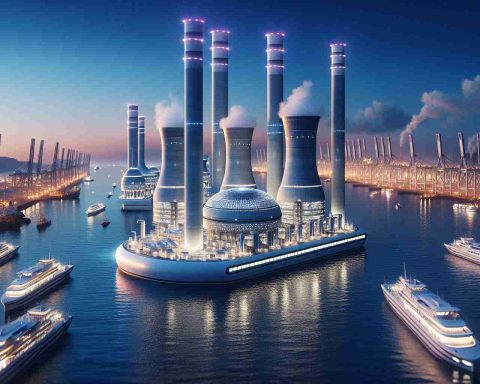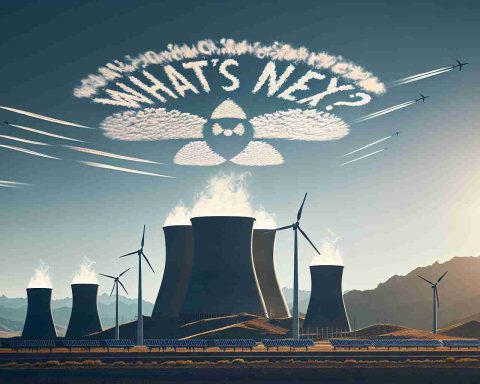- China’s Experimental Advanced Superconducting Tokamak (EAST) achieves a significant milestone by maintaining a fusion reaction for 1,066 seconds.
- The “artificial Sun” uses superconducting magnets and advanced plasma control to mimic nuclear fusion like the Sun’s, offering a cleaner energy alternative.
- Nuclear fusion technology promises abundant, sustainable energy without greenhouse gases and the risk of radioactive disaster.
- This breakthrough helps position China as a leader in global clean energy initiatives while inspiring international collaborative projects.
- Nuclear fusion could revolutionize sectors with high energy demands and contribute to cleaner hydrogen production and space exploration.
- Although challenges remain, the future of fusion-powered energy is promising, urging global efforts to invest and innovate in this frontier.
In a dazzling leap toward a clean energy revolution, scientists in China have pushed the boundaries of nuclear fusion with their state-of-the-art reactor, the Experimental Advanced Superconducting Tokamak (EAST). Dubbed the “artificial Sun,” this remarkable creation roared to life, maintaining a controlled fusion reaction for a staggering 1,066 seconds—more than doubling its previous best. This milestone fuels hope for a brighter future powered by fusion technology, illuminating paths toward abundant, sustainable energy without the baggage of pollutants.
The EAST reactor relies on superconducting magnets and advanced plasma control to mimic the Sun’s nuclear fusion, generating powerful energy bursts while leaving greenhouse gases in the dust. By harnessing the fusion of atomic nuclei, it promises a safer, cleaner, and remarkably efficient energy source. The achievement not only propels China into the spotlight but also invigorates international projects, signaling a global shift toward greener horizons.
With its potential to transform the energy landscape, nuclear fusion offers revolutionary applications: from providing a limitless power supply to energy-intensive sectors and fueling future space endeavors, to enabling cleaner hydrogen production. The journey to a fusion-powered world, though fraught with challenges, holds incredible promise. This transitional technology requires significant investment and complex engineering to achieve widespread feasibility.
Yet, the challenges are outweighed by the potential rewards—a sustainable energy solution free from the threats of radioactive disasters or environmental damage. As we stand on the cusp of a fusion era, China’s pioneering strides beckon a new dawn, urging nations worldwide to embrace this groundbreaking frontier and secure a sustainable future for generations to come.
China’s Fusion Breakthrough: Ushering in a New Era of Clean Energy
1. What are the key innovations in the Experimental Advanced Superconducting Tokamak (EAST) reactor?
The EAST reactor, often referred to as the “artificial Sun,” represents several groundbreaking innovations in the field of nuclear fusion technology:
– Superconducting Magnets: These are crucial for maintaining the powerful and stable magnetic fields necessary to confine hot plasma, replicating conditions found in the Sun.
– Advanced Plasma Physics: The reactor utilizes advanced plasma control algorithms to precisely manage the plasma’s temperature and density, prolonging the fusion reaction duration.
– Energy Efficiency Technologies: Innovations in energy efficiency within the reactor systems ensure minimal energy loss, maximizing output.
These technological advancements allow the reactor to maintain conditions suitable for nuclear fusion, marking a significant leap forward in harnessing a sustainable and powerful energy source akin to the natural processes fueling stars.
2. What are the potential applications of nuclear fusion technology beyond electricity generation?
Nuclear fusion technology holds transformative potential across several sectors:
– Space Exploration: Fusion energy can fuel long-duration space missions with its high energy density, enabling travel to distant planets and deep space.
– Hydrogen Production: It can produce cleaner hydrogen fuel, an increasingly vital component in combating climate change.
– Industrial Use: Industries requiring massive energy inputs, such as steel and aluminum production, could significantly benefit from fusion’s limitless energy supply.
These diverse applications underscore nuclear fusion’s potential to revolutionize energy use and open up new horizons in technology and industry.
3. What challenges does nuclear fusion technology face in achieving widespread feasibility?
Despite the promise of fusion energy, several challenges need addressing for widespread adoption:
– Technical Challenges: Maintaining stable plasma conditions over extended periods remains a significant hurdle.
– Financial Investment: High upfront costs and long development timelines demand substantial investment without immediate returns.
– Public and Environmental Concerns: Managing public perceptions and ensuring minimal environmental impact are key to successful implementation.
Addressing these challenges requires a collaborative global effort, involving governments, industries, and scientists, to maximize fusion technology benefits and secure a sustainable energy future.
For further insights into nuclear fusion and its future applications, visit ITER and U.S. Department of Energy.
The source of the article is from the blog lokale-komercyjne.pl
















